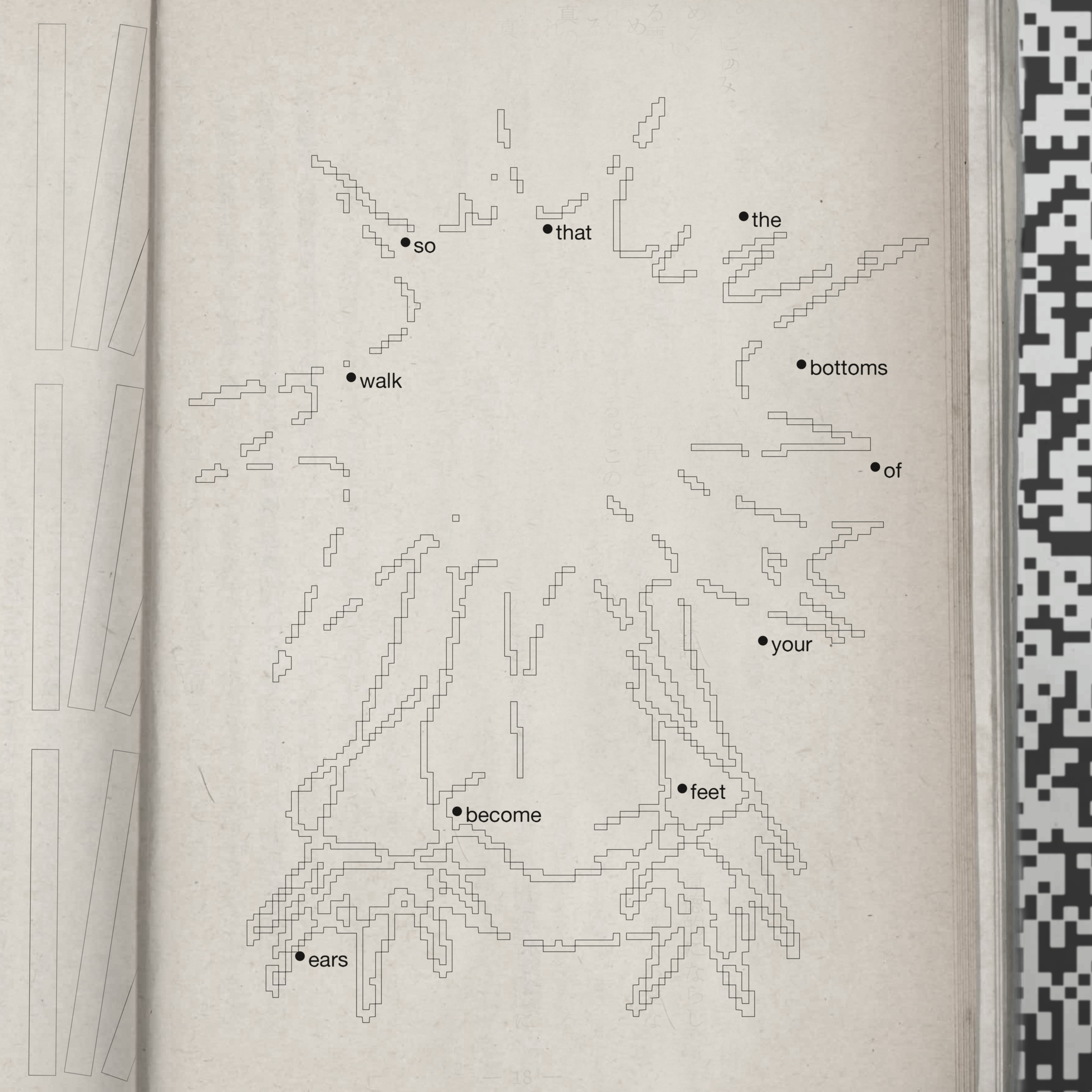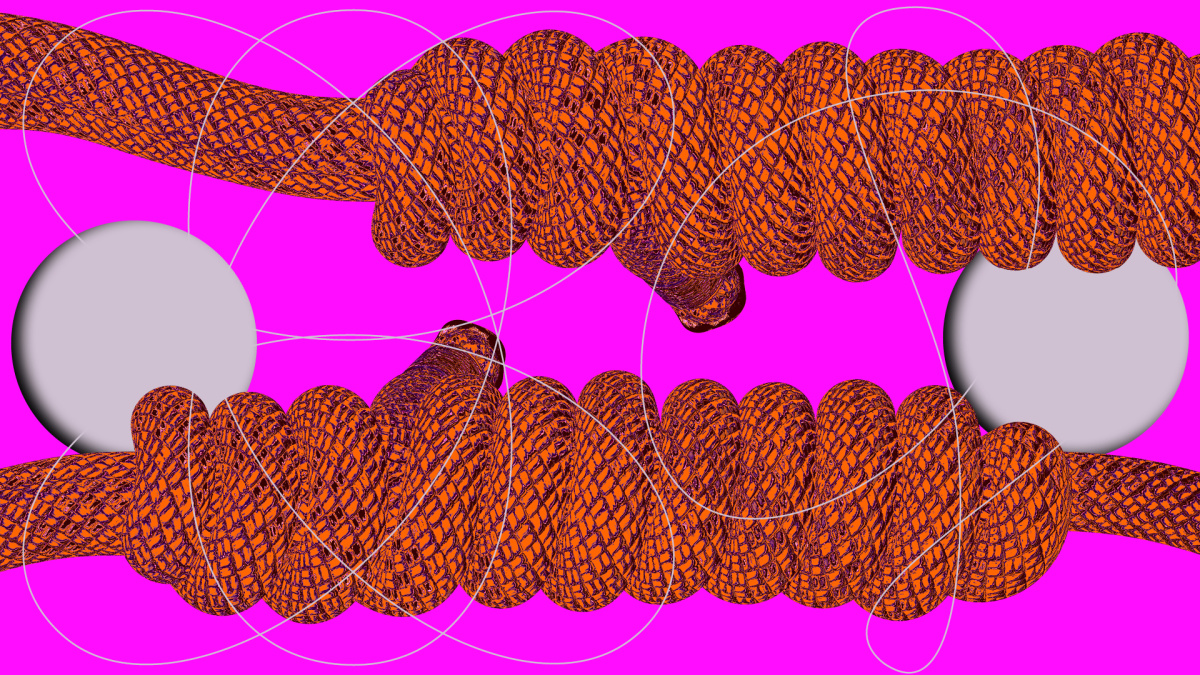While working on the collaborative publication All in It Together, Norient’s editor Philipp Rhensius and Rewire’s context curator Katía Truijen enter into a conversation over email. Learning from the various contributions, they discuss notions of place and tradition in relation to music, ways of listening to the environment, and how to write and think with rather than about music.
Dear Katía,
In our publication with Rewire Festival and Norient, we investigate how artists and musicians relate to things, like, for instance, the place they live and work in. Why is this, in your opinion, an important topic?
In general, musicians are always already involved in relations on very different levels: with other musicians, with instruments used or, of course, with the environment and ecologies they work and live in. In which way are all these things interdependent?
Warm wishes,
Philipp
Dear Philipp,
As you write, musicians are always already involved in relations on so many different levels. They experiment with emerging technologies or low-tech tools, develop long-term relationships with their instruments, or create new contexts for forgotten or overlooked music practices. They challenge existing boundaries, and find ways to collaborate and improvise across different time zones. Or they approach the instruments and technologies they use critically, assessing the ways in which they are extractive of landscapes or local communities.
I think the artists and writers whose works are part of this publication, all challenge existing relations from their own positions and practices, while reminding us that these relations could be otherwise. In his essay «An Equal Sound», artist Budhaditya Chattopadhyay asks us to be mindful of Western notions and dominant ways of dealing with music in terms of time and space, and to instead develop more equitable modes of collective sounding and listening together.
This brings me to asking you two questions:
Following how artists reconfigure existing relations, we have invited contributors to write about artists who recontextualise musical traditions, or collectively reappropriate music practices. What do you feel we can learn from these approaches?
In our previous conversations, you mentioned that you are interested in inviting contributors to listen and write with the music of artists. How do you think the various formats that are part of this publication may encourage us to develop different relations to the work of the artists?
Wishing you a nice Sunday, and speak soon!
Katía
Dear Katía,
Sunday has passed, and I’m in the middle of the Wednesday morning sounds of Berlin, typing in sync with the rhythms created by the constantly passing overground metro, the hiss of the heater, and indistinct chatter from the hallway.
So, I think, «tradition» can be a politically and philosophically loaded term, especially in the context of music. There used to be – and still is – this idea that the musical avant-garde derived mainly from the Euro-U.S. aka Western world. In this framing, avant-garde occurred through the negation of the past and its traditions in order to create something new, while from artists of the Global South the contrary was expected. But this might be best exemplified by the terrible marketing term «world music» from the 1980s. It somehow tried to universalize «traditional» music from the non-Western world, preferably local and folkloristic, and at the same time, ignored any other kinds of genres, like maybe black metal from Indonesia or progressive dance music from East Africa. Artists such as Slikback or Tzusing in China, for instance, were not on the radar at all.
I’m only riffing here, not trying to make a sweeping attack here LOL.
Today, I feel artists from everywhere play around with tradition, and expose it as something that fails when it is trying to be fixed only because it was once passed down within a group and created some kind of essentialist understanding of (cultural) identity. Instead, tradition could be a dynamic process that is constantly challenged, re-made, and rethought in relation to the time and context it is played out.
For instance, on his album Nineta (37d03d 2022), the Indigenous musician Joe Rainey brings his powwow style singing in dialogue with contemporary electronic music production. While Rainey’s singing is in his own words, «faithful to the cultural tradition» of his ancestors, the resulting music couldn’t be more current in its bass-heavy, cinematic expression.
I think, a sensitive way to play with tradition is to stand with one foot in the lineage of its ancestors, and with the other foot in the present, with its immediate, often necessary, and sometimes very mundane contexts – like an update of tradition. «Musical heritage as a form of empowerment», as the ethnomusicologist Rim Jasmin Irscheid put it in a Norient essay.
Another form of empowerment is, I think, an effort to collectively reappropriate a music practice. Like the trio Maria Chávez, Mariam Rezaei, and Victoria Shen that will premiere a piece for 12 turntables that Rewire commissioned. Riffing again here, so shush me if needed, but when I see each of them perform, I get the impression that turntablism could be understood as a predecessor to music software such as Ableton or Cubase. On the one hand, it emancipated one from the constraints of expensive studios. On the other hand, it supported a radical individualization of music making: the «bedroom producer» is a popular example – a person sitting in a room making music in solitude. Very convenient, but also very alienating. This trio is a great example of how an instrument that was supposed to be played by an individual can be used collectively in a group, and thus also lead to wild musical results. In a way, the trio breaks not only with musical traditions but also discursive traditions. In her poetic essay, the scholar Peggy Kyoungwon Lee writes about Victoria Shen’s music practice: «She tinkers with the cultural baggage of their visual referent, owning it: non-white working-class women, hypersexuality, ‹stripper nails›, feminine excess, the racialized labor of the ‹Asian nail person›.»
I love your question about the potential of thinking with music. The reason why I’m interested in writing and thinking differently about music comes from me having been frustrated with music writing in general. Cultural production is often mostly drawing from preexisting concepts – worlds that are forced on us – conforming to the rules of some kind of Big Other, worshiped by editors with a regular income. These concepts can be how a genre needs to sound or not, what an artist needs to look like or not, or which words need to be used to describe a certain thing: things that can be placed in pre-determined boxes (personality cults, end-of-year lists, genres, origins, styles). At least, this was the case when I was more involved in the «classic realm» of cultural journalism. At some point, I asked myself: is being critical really just confirming assumed expectations of others? Is it really just about snapping at something just to catch it in an already exposed lie? This kind of judgmental writing in reviews for example can draw one away from the music and the artists that make it. It’s a toxic relationship, so to say.
In our Norient column Sonic Worlding, for example, we attempt to find ways of writing and doing that avoid constant genre-referencing; we instead try to intensify the affective and utopian qualities of music. I’m not saying that this is easy or that we will ever really succeed, but for me, the journey is the reward when dancing with questions such as: how can we make texts, audio essays, sound pieces, or essay-films that tell new stories about the world and in which thinking does not derive its concepts from an exterior «verified knowledge»? For this, we invite writers and artists to think and speculate with and not only about music. And to put the music in relation to the world in which the writers live. You know, a writing that is situated, that takes into account the writers’ social positions, financial situations as freelancers, moods and emotions, and knowledge but also will to fantasize; a writing that takes into account that everyone lives different lives and is, while listening to an extraordinary, sublime piece of music, still always embedded in seemingly ordinary activities; a writing that encourages you to actually listen and let your imagination flow. I feel that this could contribute to a more healthy relationship with the music or the artists, not only for the writers but also for the readers and listeners.
I remember you mentioned there will be a writing session at Rewire Festival. What is the idea behind this?
Also I want to ask you, relating to your comment on the relation of music with our environment. In which way, do you think, can one do this in a way that is not reproducing clichés about some kind of pastoral idyll but a utopian equitable space or place?
Speaking of place, how do you conceive the relation of music to the place where it is made? What, for instance, would be a mindful way of dealing with music in terms of time and space as Chattopadhyay writes?
Warm wishes,
Philipp
Dear Philipp.
Thank you so much for your extensive reply, which I enjoyed reading a lot (and I learned a lot from too!).
I’m writing here from a snowy Rotterdam, which is quite exceptional these days, and in the background I hear car horns and am anticipating drums of a Turkish wedding party that is about to begin. I’m sorry it took me a bit more time to respond again. Tomorrow we will announce the full context programme, and I was writing and checking texts with artists, to find precise words for describing their work, connections between practices, and the type of conversations or listening sessions we imagine for the festival...
Something that indeed comes up in the work of many artists performing at Rewire, is their approach to tradition as something dynamic, that is constantly challenged and remade, as you rightfully point out. Regarding writing about music, I also agree with your emphasis on situatedness, and your suggestion to invite authors to write from their everyday realities specifically. That leads me to responding to your questions!
Regarding the writing session, we are inviting aspiring and early-career critics, writers, and researchers to reflect on the music, performances, screenings, and conversations at and around the festival this year. Right before the opening on April 6, we will host a session on writing about listening at Page Not Found, a generous space for publishing as artistic practice in The Hague. The idea is to discuss with participants and established writers exactly some of the questions that you also raise: how to critically and creatively write with music, from one’s own position and contexts. And to encourage different writing formats from short essays and interviews to works of sonic fiction. For next year we may consider a more extensive workshop, also inspired by Sonic Acts’s longstanding Critical Writing Workshop, which I had the pleasure to facilitate together with Arie Altena and Jennifer Lucy Allen over the last years.
Your question on the relation of music with our environment is an interesting and important one. I think that a lot of artists are exploring this through so many different modalities and media now, trying to find new sonic vocabularies while departing from local realities, that perhaps express the urgency of the mess we made, but that also allow us to engage differently with landscapes. In this regard, it is interesting to turn to the work of artist and researcher Mark Peter Wright, who contributes to this publication with his piece Micologies, in which he unpacks the microphone as an entangled instrument, and questions the role of sound and recording technologies that are bound up with forms of extractivism. How do we develop a deeper understanding of our surroundings? Matthew Biederman and Pierce Warnecke’s work Spillover that they will perform at Rewire is also relevant here, which deals with a mountain range in northern Portugal that is scheduled to be destroyed to facilitate a lithium mine, near to northern Portugal’s main sources of drinking water. Through the use of aerial and land-based photogrammetry, they found a way to visualize and sonify the landscaping project, asking us to rethink our relationship with environmental extraction.
Here again the question of situatedness or site-specificity is important, which also leads to your third question on place, and how to conceive the relation of music to the place where it is made. I’m looking forward to reading Gisela Swaragita’s essay on field recording and place in which she draws from a personal experience being in a MRI, and which is inspired by the music of Liew Niyomkarn. Liew will host a listening session at Rewire this year, with crowd-sourced field recordings by friends, tuning into various sonic environments and realities.
Part of this publication is also the introduction to composer, radio artist, and sound ecologist Hildegard Westerkamp’s The Soundscape Speaks. She writes that: «The sound environment has much to tell us – it simply ‹voices› all activities – and if we dare to really listen, we may sense the depth of the environmental trouble the world is facing».
Perhaps these musical, sound, and written works together invite us to imagine what a possible utopian equitable space or place that you ask about could be?
One more question for you! Talking about situatedness, I want to ask you the same question on how you conceive the relation of music to the place where it is made. Maybe you want to say a bit more on the ideas behind Norient’s Timezones podcast series?
Looking forward to your response!
Best wishes,
Katía
Dear Katía,
Oh nice, it is snowing? I love how the soundscape changes when that happens – how the relation between things and human perception changes. The snow is like a muffle that puts itself between the world and the things it touches. Berlin is pretty rainy these days, which causes, for me, a less appealing, more stressful soundscape than snow, it has more attack and less decay, it is a kind of amplifier.
Thanks for your rich thoughts, I’m learning a lot too. You are saying many interesting things, yet let me at least react to one aspect. In the essays of Wright, but also Renata Yazzie speaking on Joe Rainey’s music or Gisela Swaragita through her listening experience with Liew Niuomkarn’s album I Think of Another Time When You Heard It (Chinabot 2022), there is always some kind of agency change at work. This can be quite literally through memory, when for instance Swaragita is reminded of her sound experience in an MRI, but also more transcendentally, like in the case of the Indigenous musician and scholar Yazzie. For her, listening to Indigenous music is not only an act of building a relationship with the entities surrounding her, but also a gateway to a place that encapsulates the feelings and emotions of her ancestors.
May I zoom out here briefly? Isn’t it that one is always changed a little after an encounter with something (music) or somebody (other people at concerts or in clubs)? In every relationship, one loses sovereignty, and is always at risk. For example every field recording has its own agency. Even if one over saturates it with sound effects, it is something on its own, it has its own «soul» or core, so to say, that the artist needs to relate to.
When speaking of risk, I was reminded of a bon mot by the philosopher Michel Serres, which, for me, perfectly describes what a healthy and sustainable (symmetrical) relationship could be? «The I is rarely revealed outside these circumstances. I am, I exist in this mixed contingency that changes again and again through the agency of the storm that is the other, through the possibility of his or her existence. We throw each other off balance, we are at risk» (Serres 2008, 29).
To get to your question about the relation of music and place. I would like to propose multiple ways of conceiving it.
1. When I played drums in a hardcore punk band, we rehearsed in some moldy basement, where I would occasionally play drums on my own. One day, when taking a break, I noticed this clicking sound coming from the mechanical heater clock. I listened to it for a few minutes until I decided to use the strange rhythm as a template for practicing. I realized two things: that noise can also be music, and that places have their own sonic identity that can affect the way one makes music.
2. Another way of seeing it would be more obvious: how does a political or environmental situation of a place affect the making of music? Or, how does music react to what happens in a place? The works of Mark Peter Wright as well as Matthew Biederman and Pierce Warnecke are good examples in which the environment is given an ageny so to say. Then you have these speculative, affective approaches in which one correlates the soundscapes artists live in with the music they make, like the idea that the repetition and roughness of early Detroit techno is some kind of reproduction of the assembly line in the city’s car factories. Or take DeForrest Brown Jr.’s recent book Assembling a Black Counter Culture in which he describes the genealogy of Detroit techno as rooted in the transformation of urban centers and the new forms of industrial capitalism that gave rise to the African American working class.
3. There is another level I’m interested in, a «classic» Norientalist one, when you roughly oppose the western world with the Global South. Putting it very generally, probably being a little reductionist, I think that in the west, categories such as nation or place are at best avoided by musicians as much as possible. It is often justified by a well-meaning moralist notion of «no nation, no border» ideologies backed by the fact that oneself, but also goods, can travel freely, and conflicts between ethnic or political parties are pretty much nonexistent.
In countries such as Hungary or Sri Lanka, where two of the younger Timezones episodes were made by local Norient curators, this kind of thinking is, at its best, utopian. While Sri Lanka’s artists have been creating in the shadows of the bloody conflicts between Sinhalese Buddhists, Hindu Tamils, and Muslims for years, the artists in Budapest are torn between president Orbán’s aggressive nationalism on the outside and the devastating preclusion of the autonomy of independent art and music spaces. In short: you can’t escape the constraints of the place you are in. You are inspired or limited by it on many levels, and artists are constantly adapting to it, even when trying to ignore it.
Speaking of Timezones, I guess it’s best to link you and the readers to the commissioned audio talk between the artistic directors Suvani Suri and Abhishek Matur and Norient founder Thomas Burkhalter. Here, they discuss the concept of the experimental podcast series, and its potential of finding new forms for music journalism and music research.
I think that’s it for now. Too bad, it was a pleasure to talk to you. Maybe this could be continued someday?
Warm wishes and have a good festival,
Philipp



